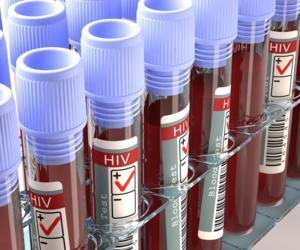Is There a Window Period to Test for HIV?

HIV is a virus that attacks and slowly destroys the immune system of the body. Once the virus gets into the body, it gets incorporated in the bloodstream and destroys white blood cells in the immune system. The immune system is a natural system that protects the body from infections. HIV is found in the fluid of the body. HIV reproduces copies of itself slowly as it continues staying in the body. There are a number of tests done for HIV. However, most of these tests are not perfect.
What Is Window Period?
This is the time between when the infection gets in the body and when the body produces proteins and antibodies to the infection. When a person is infected with HIV virus, the virus gets into the blood and starts circulating very fast during the first few days before it is completely incorporated. The body reacts by producing antibodies to the virus. HIV tests analyze the sample and identify such antibodies. If the antibodies are not yet produced a person may test negative. This period is the window period and can last for 3 to 4 weeks. The period may also vary depending on the type of test conducted.
When Should I Be Tested?
- In case you have sex with an infected person without a condom.
- Having been exposed to infected fluids such as semen.
- After sharing sharp objects such as needle and syringes.
- Receiving blood that is not tested.
- In case you receive strange symptoms such as rashes, sores, and ulcers in the throat, mouth, and anus.
- Suffering from opportunistic infections such as diarrhea that lasts for long without healing.
- If you were tested negative in the last three months.
How Do Tests Affect the Window Period?
RNA tests. These tests are much more expensive and rare since they give results based on the presence of the virus. This test looks for the presence of the viral RNA in the blood stream. The window period is about eleven days shorter than the rapid test and a positive result is found within 9 to 14 days of infection. Because this test is more expensive, it is not commonly carried out in developed countries where free testing for HIV is offered.
Antibody (Rapid tests). It is the most common test but it gives a positive response depending on the antibodies to the infection rather than the virus. It may take around 3 months for the body to produce enough antibodies to be detected by this test. Within 4 to 6 weeks most of the infected people have enough antibodies, while in 12 weeks 98% of infected people can test positive.
Home Tests. One of the tests is the OraQuick by Orasure which is done at home using oral fluids. Manufacturers have indicated its window period to be 12 weeks.
The second test is Home Access HIV-1 where a person collects the sample and sends them to the lab and waits for results.
PCR tests. This test is most commonly used to test babies born from mothers with the virus. The test uses actual virus. It is used to identify viral load in an infected person. This test looks for viral proteins in the blood. The window period for this test can take between 2 and 3 weeks.
Factors Affecting Window Periods
- Type of test used. Some tests are stronger than the others in identifying the infection. Some tests uses viral load while others use the antibodies to the virus.
- It is difficult to determine the exact date of exposure.
- Difference in the strength of a person’s body to produce antibodies.
- In case a person has been suffering from other infections, mostly sexually transmitted infections.
Conclusion
When a person is first exposed to HIV the virus starts to rapidly multiply in the bloodstream, however, even though the person at this point can transmit the virus to others, the presence of the virus might not show up in a blood test. The period between the time of exposure and when a test is positive is called the window period. There are several types of tests for HIV and each has its own window period.
The RNA test which looks for viral DNA in the bloodstream has a window period of 9 to 14 days.
The Rapid test which checks for antibodies against HIV has a window period of 4 to 12 weeks. This delay is because it takes time for the body to produce enough antibodies to be detected.
The OraQuick home test requires four weeks before one gets a conclusive result as does the Home Access HIV 1 test.
PCR tests which look for the viral protein in the bloodstream and is most commonly used for babies suspected to have contracted the virus from infected mothers, has a window period of about two to three weeks.
Because every individual is different, it is possible for some test to show up negative for HIV even though the person does in fact have the infection. If in the case of a potential exposure and a negative test the person should get tested a couple more times just to be absolutely sure. Generally, around twelve weeks after exposure about 99.9% of individuals would have developed antibodies against the virus and if infected, will show a positive result in the Rapid test. If after three months of potential exposure the tests are still negative then it can be concluded that the individual has not contracted the disease.
The Bottom Line
Window periods change with different factors. It is always advisable to take several tests if you are tested negative during the first test. This helps to confirm the infection.
Early detection and starting of treatment can go a long way in ensuring that the condition never progresses to acquired immunodeficiency syndrome (AIDS), and that the patient leads a life that is as close to normal as possible.
People who are at high risk of contracting the disease like those who have multiple sex partners, sex workers, and drug user who share needles and syringes should get tested once every three months, this could not only help save their lives but also prevent the spread of the virus to other individuals.











